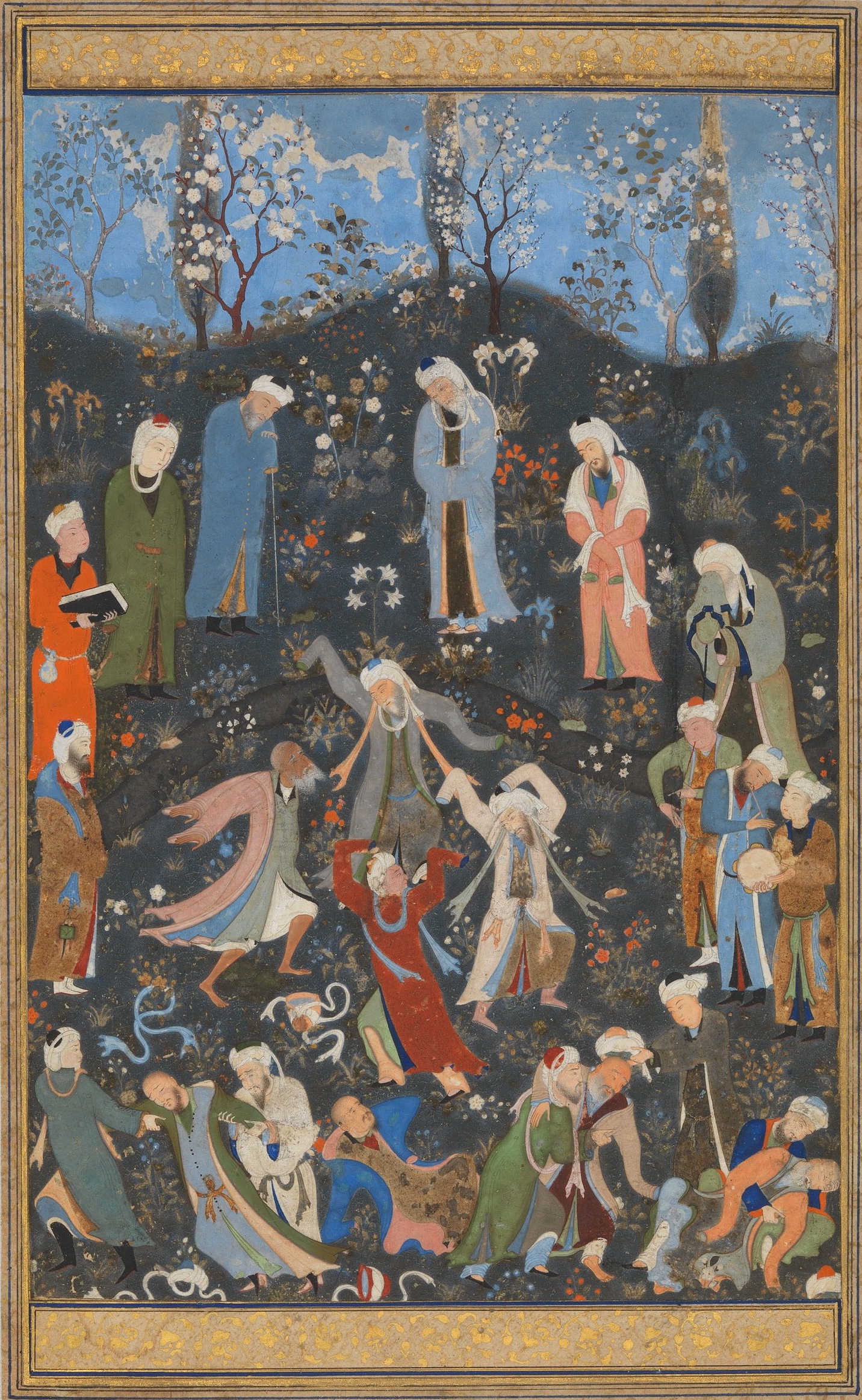|
Ahamed Mohiyudheen Noorishah Jeelani
''Sheikh Noor ul Mashaikh Sayyid Ahamed Muhyudheen NooriShah Jeelani'' Arabic: (حضرة سيد أحمد محي الدين نوري شاه الجيلاني), known more commonly as ''NooriShah Jeelani'', was a renowned 20th-century muslim, sufi, wali, mystic, orator, faqeeh, theologian, mujaddid and highly acclaimed Islamic scholar of the Qadri, Chisti order from the Indian sub continent. He was the 21st grand son of the famous Sufi saint Ghous-e-Azam Sheikh Mohiyudheen Abdul Qadir Jilani of Baghdad. He was also widely known by his title ''Noor-ul-Mashaikh''. He was the Eponymous founder of the Silsila-e-Nooriya tariqa (Sufi order) which is a sub-branch of Qadiriyya and Chistiyya in India. His silsila has spread throughout the world influencing millions in more than 40 countries through thousands of his disciples (murid), many gatherings, mosques, Islamic schools, colleges, hospitals and general humanitarian services to society. He was the founder of Kerala’s first Islam ... [...More Info...] [...Related Items...] OR: [Wikipedia] [Google] [Baidu] |
Dabirpura
Dabeerpura is one of the oldest neighborhoods in the Old City area of Hyderabad, Telangana, India. It is surrounded by Yakutpura, Chanchalguda, Purani Haveli, Noorkhan Bazar, and Azampura. Dabeerpura has one of the original thirteen gateways called ''darwaza''. There is a big flyover over the train track in this suburb built in 1990. Etymology Dabeerpura is named after the famous Delhi-born Urdu poet and writer Mirza Ghalib who was given the title 'Dabeer-ul-Mulk'. Public transport Dabeerpura is connected by buses run by TSRTC, and since a bus depot is close by, it is well connected to Charminar, Nampally and Koti. It is the entrance to the Nizam Hyderabad (now called the Old City) There is a Multi Modal Transport System ( MMTS) Train Station at Dabeerpura. The MMTS timings can be found on the South Central Railway website. Landmarks * Dabeerpura Darwaza, one of the thirteen original gateways built during the Nizam's rule which served as an entrance to the Purani Haveli. * B ... [...More Info...] [...Related Items...] OR: [Wikipedia] [Google] [Baidu] |
Ibn Arabi
Ibn ʿArabī ( ar, ابن عربي, ; full name: , ; 1165–1240), nicknamed al-Qushayrī (, ) and Sulṭān al-ʿĀrifīn (, , 'Sultan of the Knowers'), was an Arab Andalusian Muslim scholar, mystic, poet, and philosopher, extremely influential within Islamic thought. Out of the 850 works attributed to him, some 700 are authentic while over 400 are still extant. His cosmological teachings became the dominant worldview in many parts of the Muslim world. His traditional titular is ''Muḥyīddīn'' ( ar, محيي الدين; ''The Reviver of Religion''). After he passed away, among practitioners of sufism he is renowned by the honorific title ''Shaykh al-Akbar'' ( ar, الشيخ الأكبر) which the "Akbarian" school derives its name, and make him known as ''Doctor Maximus'' (The Greatest Teacher) in medieval Europe. Ibn ʿArabī was considered as a saint by some scholars and Muslim community. Al-Suyuti, Tanbih al-Ghabi fi Tanzih Ibn ‘Arabi (p. 17-21) Biography Ibn ʿAra ... [...More Info...] [...Related Items...] OR: [Wikipedia] [Google] [Baidu] |
Sufi Saint
Sufism ( ar, ''aṣ-ṣūfiyya''), also known as Tasawwuf ( ''at-taṣawwuf''), is a mystic body of religious practice, found mainly within Sunni Islam but also within Shia Islam, which is characterized by a focus on Islamic spirituality, ritualism, asceticism and esotericism. It has been variously defined as "Islamic mysticism",Martin Lings, ''What is Sufism?'' (Lahore: Suhail Academy, 2005; first imp. 1983, second imp. 1999), p.15 "the mystical expression of Islamic faith", "the inward dimension of Islam", "the phenomenon of mysticism within Islam", the "main manifestation and the most important and central crystallization" of mystical practice in Islam, and "the interiorization and intensification of Islamic faith and practice". Practitioners of Sufism are referred to as "Sufis" (from , ), and historically typically belonged to "orders" known as (pl. ) – congregations formed around a grand who would be the last in a chain of successive teachers linking back to Muhamm ... [...More Info...] [...Related Items...] OR: [Wikipedia] [Google] [Baidu] |
Qadri
The Qadiriyya (), also transliterated Qādirīyah, ''Qadri'', ''Qadriya'', ''Kadri'', ''Elkadri'', ''Elkadry'', ''Aladray'', ''Alkadrie'', ''Adray'', ''Kadray'', ''Kadiri'', ''Qadiri'', ''Quadri'' or ''Qadri'' are members of the Sunni Qadiri tariqa (Sufi order). The tariqa got its name from Abdul Qadir Gilani (1077–1166, also transliterated ''Jilani''), who was a Hanbali scholar from Gilan, Iran. The order relies strongly upon adherence to the fundamentals of Sunni Islamic law. The order, with its many offshoots, is widespread, particularly in the non-Arabic-speaking world, and can also be found in Turkey, Indonesia, Afghanistan, India, Bangladesh, Pakistan, the Balkans, Russia, Palestine, China, Gladney, Dru "Muslim Tombs and Ethnic Folklore: Charters for Hui Identity"''Journal of Asian Studies'', August 1987, Vol. 46 (3): 495-532; pp. 48-49 in the PDF file. and East and West Africa. History The founder of the Qadiriyya, Abdul Qadir Gilani, was a scholar and preacher. Havin ... [...More Info...] [...Related Items...] OR: [Wikipedia] [Google] [Baidu] |
Mujaddid
A ''mujaddid'' ( ar, مجدد), is an Islamic term for one who brings "renewal" ( ar, تجديد, translit=tajdid, label=none) to the religion. According to the popular Muslim tradition, it refers to a person who appears at the turn of every century of the Islamic calendar to revive Islam, cleansing it of extraneous elements and restoring it to its pristine purity. In contemporary times, a mujaddid is looked upon as the greatest Muslim of a century. The concept is based on a ''hadith'' (a saying of Islamic prophet Muhammad),Neal Robinson (2013), Islam: A Concise Introduction, Routledge, , Chapter 7, pp. 85–89 recorded by Abu Dawood, narrated by Abu Hurairah who mentioned that Muhammad said: Ikhtilaf (disagreements) exist among different hadith viewers. Scholars such as Al-Dhahabi and Ibn Hajar al-Asqalani have interpreted that the term mujaddid can also be understood as plural, thus referring to a group of people. ''Mujaddids'' can include prominent scholars, pious rul ... [...More Info...] [...Related Items...] OR: [Wikipedia] [Google] [Baidu] |
Wali
A wali (''wali'' ar, وَلِيّ, '; plural , '), the Arabic word which has been variously translated "master", "authority", "custodian", "protector", is most commonly used by Muslims to indicate an Islamic saint, otherwise referred to by the more literal "friend of God in Islam, God".John Renard, ''Friends of God: Islamic Images of Piety, Commitment, and Servanthood'' (Berkeley: University of California Press, 2008); John Renard, ''Tales of God Friends: Islamic Hagiography in Translation'' (Berkeley: University of California Press, 2009), passim. When the Arabic definite article () is added, it refers to one of the names of God in Islam, Allah – (), meaning "the Helper, Friend". In the traditional Islamic understanding of saints, the saint is portrayed as someone "marked by [special] divine favor ... [and] holiness", and who is specifically "chosen by God and endowed with exceptional gifts, such as the ability to work Miracle worker, miracles".Radtke, B., "Saint", in: ' ... [...More Info...] [...Related Items...] OR: [Wikipedia] [Google] [Baidu] |
Sufi
Sufism ( ar, ''aṣ-ṣūfiyya''), also known as Tasawwuf ( ''at-taṣawwuf''), is a mystic body of religious practice, found mainly within Sunni Islam but also within Shia Islam, which is characterized by a focus on Islamic spirituality, ritualism, asceticism and esotericism. It has been variously defined as "Islamic mysticism",Martin Lings, ''What is Sufism?'' (Lahore: Suhail Academy, 2005; first imp. 1983, second imp. 1999), p.15 "the mystical expression of Islamic faith", "the inward dimension of Islam", "the phenomenon of mysticism within Islam", the "main manifestation and the most important and central crystallization" of mystical practice in Islam, and "the interiorization and intensification of Islamic faith and practice". Practitioners of Sufism are referred to as "Sufis" (from , ), and historically typically belonged to "orders" known as (pl. ) – congregations formed around a grand who would be the last in a chain of successive teachers linking back to Muha ... [...More Info...] [...Related Items...] OR: [Wikipedia] [Google] [Baidu] |
Muslim
Muslims ( ar, المسلمون, , ) are people who adhere to Islam, a monotheistic religion belonging to the Abrahamic tradition. They consider the Quran, the foundational religious text of Islam, to be the verbatim word of the God of Abraham (or '' Allah'') as it was revealed to Muhammad, the main Islamic prophet. The majority of Muslims also follow the teachings and practices of Muhammad ('' sunnah'') as recorded in traditional accounts (''hadith''). With an estimated population of almost 1.9 billion followers as of 2020 year estimation, Muslims comprise more than 24.9% of the world's total population. In descending order, the percentage of people who identify as Muslims on each continental landmass stands at: 45% of Africa, 25% of Asia and Oceania (collectively), 6% of Europe, and 1% of the Americas. Additionally, in subdivided geographical regions, the figure stands at: 91% of the Middle East–North Africa, 90% of Central Asia, 65% of the Caucasus, 42% of Southeast As ... [...More Info...] [...Related Items...] OR: [Wikipedia] [Google] [Baidu] |
Arabic
Arabic (, ' ; , ' or ) is a Semitic languages, Semitic language spoken primarily across the Arab world.Semitic languages: an international handbook / edited by Stefan Weninger; in collaboration with Geoffrey Khan, Michael P. Streck, Janet C. E.Watson; Walter de Gruyter GmbH & Co. KG, Berlin/Boston, 2011. Having emerged in the 1st century, it is named after the Arabs, Arab people; the term "Arab" was initially used to describe those living in the Arabian Peninsula, as perceived by geographers from ancient Greece. Since the 7th century, Arabic has been characterized by diglossia, with an opposition between a standard Prestige (sociolinguistics), prestige language—i.e., Literary Arabic: Modern Standard Arabic (MSA) or Classical Arabic—and diverse vernacular varieties, which serve as First language, mother tongues. Colloquial dialects vary significantly from MSA, impeding mutual intelligibility. MSA is only acquired through formal education and is not spoken natively. It is ... [...More Info...] [...Related Items...] OR: [Wikipedia] [Google] [Baidu] |
Khwaja
Khawaja (Persian: خواجه ''khvâjəh'') is an honorific title used across the Middle East, South Asia, Southeast Asia and Central Asia, particularly towards Sufi teachers. It is also used by Kashmiri Muslims and the Mizrahi Jews—particularly Persian Jews and Baghdadi Jews. The word comes from the Iranian word ''khwāja'' (Classical Persian: ''khwāja''; Dari ''khājah''; Tajik ''khoja''). In Persian, the title roughly translates to 'Lord' or 'Master'. The Ottoman Turkish pronunciation of the Persian خواجه gave rise to ''hodja'' and its equivalents such as ''hoca'' in modern Turkish, ''hoxha'' in Albanian, ''xoca'' (''khoja'') in Azerbaijani, ''hodža'' in Bosnian, ''χότζας'' (''chótzas'') in Greek, ''hogea'' in Romanian, and ''хоџа'' in Serbian. Other spellings include ''khaaja'' (Bengali) and ''koja'' ( Javanese). The name is also used in Egypt and Sudan to indicate a person with a foreign nationality or foreign heritage. Etymology Ultimately deri ... [...More Info...] [...Related Items...] OR: [Wikipedia] [Google] [Baidu] |
.jpg)






